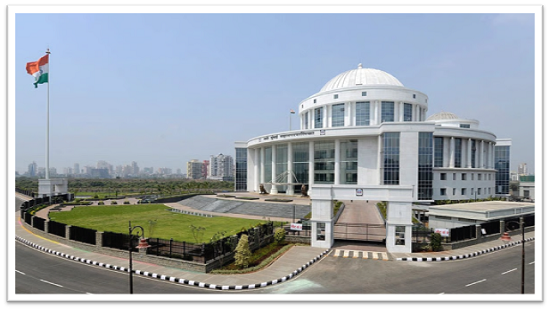
Navi Mumbai’s 2025 Election Shake-Up Revealed, Massive Reservation Shift Set to Redefine Urban Power Balance
Navi Mumbai has entered a significant phase of electoral preparation with the Navi Mumbai Municipal Corporation (NMMC) releasing its draft reservation list for the 2025 municipal elections. This announcement, rooted in demographic data and statutory requirements, reflects the broader evolution of urban governance in India, where representation, social equity and administrative precision converge to shape political outcomes.
With 111 seats up for contest and 56 of them reserved for women, the framework unveiled by NMMC is not merely a bureaucratic formality. It signals a decisive shift toward greater gender balance, inclusion of marginalized groups and a governance model better aligned with the city’s changing social fabric.
A Reservation Matrix Designed for Balanced Representation
The 2025 civic polls will operate on a 111-seat structure, following the final ward delineation published in the state gazette on October 6, 2025. Out of these 111 seats, exactly half, 56 seats, are earmarked for women. This includes women belonging to Scheduled Castes (SC), Scheduled Tribes (ST), Other Backward Classes (OBC) and the General category.
In a nation where women’s representation across local bodies has often varied between 33 percent and 50 percent, Navi Mumbai’s allocation reflects a forward-looking approach. It is not simply about meeting mandated quotas, it is about reshaping civic decision-making by expanding who sits at the table.
Reservation across categories is distributed proportionally. This ensures the allocation is mapped to demographic realities within individual wards, creating electoral fairness beyond symbolic compliance. Such clarity is essential in India’s evolving municipal governance landscape, where transparency and predictability continue to grow in importance.
Ward-Wise Breakup Offers Clarity and Reduces Ambiguity
A key strength of NMMC’s reservation document is its granular ward-wise categorization across all 28 wards. Instead of using broad classifications, the corporation has published a detailed seat allocation list across categories such as:
• Scheduled Caste (Women)
• Scheduled Tribe (Women)
• OBC
• OBC (Women)
• General
• General (Women)
This level of specificity matters. Local elections in urban India depend heavily on hyper-local dynamics, where even a small shift in category allocation can reshape electoral strategies for political parties, emerging candidates and long-standing leaders. By offering a clear ward-wise breakdown, NMMC reduces ambiguity and significantly lowers the scope for late-stage disputes that often delay municipal election cycles.
Impact of SEC-Driven Corrections
A notable component of the updated draft is the inclusion of revisions mandated by the State Election Commission (SEC). These corrections, though limited to a few wards, highlight the importance of oversight mechanisms that ensure compliance and accuracy.
Key changes include:
• Ward 6(C) reclassified as OBC (Women)
• Ward 6(D) updated to General
• Ward 16 seat 16(A) shifted to OBC
• Ward 16 seat 16(C) reassigned to General (Women)
These adjustments reflect a governance system that is responsive, iterative and audit-driven. In fast-growing urban regions like Navi Mumbai, frequent demographic shifts require electoral frameworks that can adapt to updated data and regulatory insights.
Why These Numbers Matter
Reservation policies in local body elections shape leadership pipelines and influence the quality of civic governance. With 56 of 111 seats reserved for women, Navi Mumbai sends a strong signal about its commitment to gender-inclusive governance. Such measures expand participation among first-time female candidates and improve representation in decision-making spaces that directly influence urban development.
Moreover, structured representation for SC, ST and OBC communities, through both general and women-specific seats, offers equitable opportunities aligned with population patterns. In a city defined by migration, rapid expansion and economic diversity, this framework becomes critical for balanced policymaking.
A Step Toward Predictable and Transparent Urban Governance
Municipal bodies across India often struggle with transparency in pre-election procedures. In contrast, NMMC’s structured reservation release, combined with SEC-driven updates, represents a more predictable and standardized approach. This is increasingly important as urban voters demand accountability in public services, infrastructure, mobility and digital governance.
The leadership chosen in the 2025 elections will guide how Navi Mumbai addresses these priorities. Therefore, the reservation list is not just a bureaucratic requirement, it is a blueprint for shaping who will lead the city in the coming years.
Navigating the Road Ahead
As per established procedures, the draft reservation list is open for objections and suggestions. Political parties are expected to adjust their candidate selection strategies accordingly, while citizen groups may review the allocations to ensure they align with demographic realities within their localities.
Once finalized, this reservation structure will anchor one of Navi Mumbai’s most consequential municipal elections. With gender parity, proportional representation and enhanced transparency at its core, the 2025 electoral cycle positions the city for more inclusive and responsive governance.
Navi Mumbai’s growth trajectory continues to accelerate, driven by new infrastructure, expanding residential clusters and shifting economic patterns. The leaders elected under this reservation matrix will play a central role in determining how effectively the city navigates these challenges. The draft reservation list, therefore, is more than a procedural document, it is a defining roadmap for the city’s governance and civic priorities in the years ahead.





